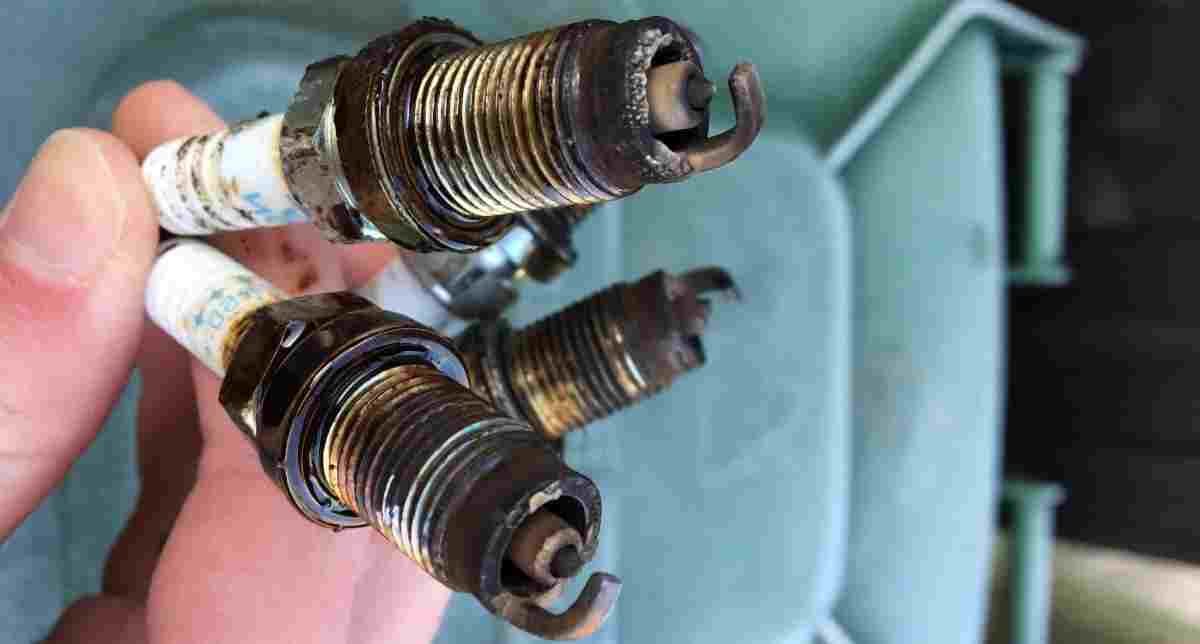Old or defective spark plugs can cause car starting difficulties, this is because they are responsible for generating the energy that ignites the air-fuel mixture in a car’s internal combustion engine. That said, you want to know those signs you need new spark plugs, and have them replaced for your car to run optimally.
That said, what happens when spark plugs go bad, and what can you do to fix them? Thankfully, this article will provide signs that let you know it’s time to replace the spark plugs on your new or used car.
Signs you need new spark plugs

1. Engine misfires
A misfiring engine indicates that one or more spark plugs are not firing correctly, thus, spark plugs ignite at the wrong time. A misfire may sound or feel like a spitting noise or a violent shaking. Consistent misfiring can result in poor car performance, low fuel economy, increased exhaust emissions, rough idling, and damage to the catalytic converter.
2. Knocking engine
The fuel that failed to ignite at the right time tends to combust later when your engine isn’t prepared for it, which can lead to engine knocking. This issue makes an audible ‘knocking’ sound, so pay great attention. If the issue is not addressed, it might cause engine damage over time.
3. Poor gas mileage
When spark plugs function properly, they efficiently burn fuel in an engine. If you discover that your gas mileage is decreasing, deteriorating spark plugs may be the blame. As spark plugs, age, the area between the electrodes may either increase or contract. This results in the spark plug failing to ignite or igniting sporadically, which wastes fuel and increases pollutants.
4. Trouble starting the car
Especially in cold weather, dirty, broken, or worn-out spark plugs make it harder to deliver the spark required to start your car’s engine. This may result in a jerky start or prolonged cranking before the car starts. If this continues over time, the engine and starter will be damaged, and the battery will be drained.
5. Slow acceleration
If you press down on the gas pedal and the car does not respond as quickly as normal, the spark plugs may be the culprit. However, this could also be the result of other problems, such as soiled fuel injectors, faulty oxygen sensors, or a malfunctioning fuel pump. Before purchasing new spark plugs, ensure that your car has been analyzed by a skilled mechanic.
6. Rough idling
Keep your ears out for rattling, pinging, or knocking sounds; these are additional signs of a faulty spark plug.
If your car’s engine makes peculiar sounds or vibrations while idling, the spark plugs may not be functioning properly to maintain engine smoothness.
7. Noisy engine while driving
Whether you drive a car with a four-, six-, or eight-cylinder engine, the noise will alert you to the malfunction of at least one spark plug. Reducing the efficacy of a cylinder causes others to be overworked and might result in unusual noises while driving, such as rattling.
8. check engine light turns on
You wouldn’t like seeing their car’s check engine light turn on, but many people disregard it and continue driving. This is a poor decision as there could be a variety of problems with your engine, and you want to avoid an expensive and inconvenient breakdown.
Therefore, it is best to have the plugs inspected. The light is intended to alert you to potential hazards before you become stuck or incur costly damage and may indicate that your spark plugs need to be replaced.
9. Your manual says so
Spark plug quality varies, however, most manufacturers recommend replacing spark plugs every 50,000 kilometers. Some last approximately 130,000 kilometers, whereas inexpensive copper spark plugs may last approximately 40,000 kilometers. “Extended life” spark plugs constructed from more durable metals can last up to 160,000 kilometers. Long-life platinum and iridium spark plugs typically last up to 100,000 miles or longer as long as the engine isn’t using oil or idle for too long.
What happens when spark plugs go bad?
When spark plugs go bad, they can cause a variety of issues in a car’s engine such as not being able to generate a sufficient spark, which can lead to incomplete combustion of the fuel in the engine. This can result in a loss of power, reduced fuel efficiency, and increased emissions.
Spark plugs that have gone bad may also cause the engine to misfire, resulting in a rough idle and possibly even causing the engine to stall. In some cases, faulty spark plugs can cause damage to the engine if they continue to be used for an extended time. Make sure to replace spark plugs when they go bad to keep the engine running smoothly.
Changing your spark plugs provides many advantages for your car, including:
- Consistent, efficient combustion
- Better fuel efficiency
- Reliable and quick-starting
- Reduce emissions
Note: Make sure that your next tune-up includes a check of the spark plugs.
How long do spark plugs last?
The condition of your spark plugs can affect the engine’s performance. Despite their extensive use, spark plugs do not require replacement very frequently.
Most manufacturers recommend replacing spark plugs every 30,000 miles, however depending on the type of spark plugs your car has, you may be able to go up to 100,000 miles. For instance, a spark plug made of copper will not last as long as one made of tougher materials, such as platinum or iridium.
Always replace spark plugs as a set (one for each engine cylinder) and follow the manufacturer’s recommendations (found in the owner’s manual) regarding the type of spark plugs to use.
How do you visually check a spark plug?
If you do not know how to inspect your spark plugs, it’s a simple procedure that anyone can perform. Only a ratchet and a spark plug socket are required.
- First, find your vehicle’s spark plugs. They are normally situated near the engine’s top.
- Once located, remove each spark plug using the ratchet and spark plug socket.
- Once you have removed the spark plugs, examine them closely. If they are broken or worn out, they should be replaced. However, if they appear undamaged, you can just clean them and reinstall them.
How do you change the spark plugs?
To change the spark plugs in a vehicle, you will need to gather a few tools and supplies. Here is a general guide:
1. Find the plugs
In most vehicles, the spark plugs are located under the hood, but in some cases, they may be located near the back of the engine block. Consult your vehicle’s repair manual for the exact location.
2. Gather your tools
You will need a spark plug socket, a ratchet, a spark plug gap tool, a torque wrench, and a spark plug wire puller (if applicable).
3. Remove the spark plug wires or ignition coils
If your vehicle has spark plug wires, use the spark plug wire puller to gently remove them from the spark plugs. If your vehicle has ignition coils, you will need to remove them with a socket or a screwdriver.
4. Remove the spark plugs
Using the spark plug socket and the ratchet, loosen and remove the spark plugs from the engine. If the spark plugs are stuck, you can use penetrating oil to help loosen them.
5. Install the replacement plugs
Start by checking the gap on the new spark plugs using the spark plug gap tool. If the gap is not correct, you can use the gap tool to adjust it. Then, using the torque wrench, tighten the spark plugs to the specification listed in your vehicle’s repair manual.
6. Reinstall the spark plug wires or ignition coils
If you removed the spark plug wires, gently attach them to the new spark plugs. If you removed the ignition coils, reinstall them with a socket or a screwdriver.
7. Verify if the issue has been resolved
Once you have reinstalled the spark plugs and the ignition coils or spark plug wires, start the engine and listen for any strange noises or issues. If everything sounds normal, you just fixed the problem.
The aforementioned tips should be useful as you continue to be cognizant of the significance of your spark plugs. Always consult your mechanic with any questions or concerns regarding spark plug problems. A mechanic should also be able to diagnose any problem, reach the bottom of it, and fix it permanently.
Read also: What to Do After Changing Spark Plugs
![How Much Does a Tune-Up Cost [2025 Prices & Guide] How Much Does a Tune-Up Cost [2025 Prices & Guide]](https://sanedriver.org/wp-content/uploads/2023/01/PicsArt_01-06-07.16.29.jpg)

